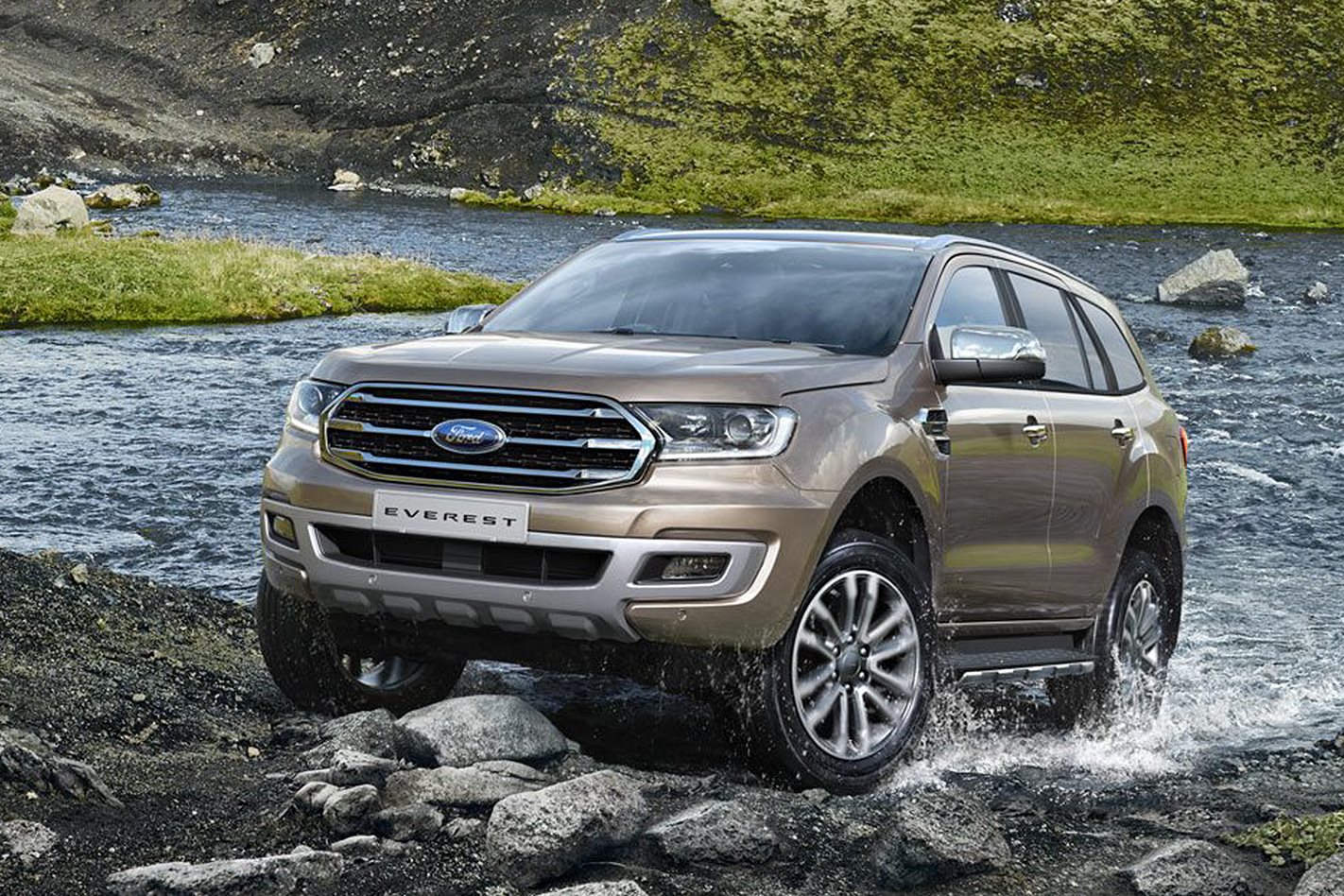WHAT IS IT
Ford Australia’s largest SUV has become an even more integral part of the portfolio since the demise of the much-loved Territory. Based on Ranger ute underpinnings, the Ford Everest has established a reputation as big and tough, if a little unsophisticated. Ford’s aiming to change that last point.
WHY WE’RE TESTING IT
With an all-new 2.0-litre twin-turbo diesel engine that will sit above the existing 3.2-litre 5-cylinder unit in the range, the Everest now has more strings to its bow. A subtle but wide-reaching refresh also lends it more substance to go toe-to-toe with some big-selling rivals.
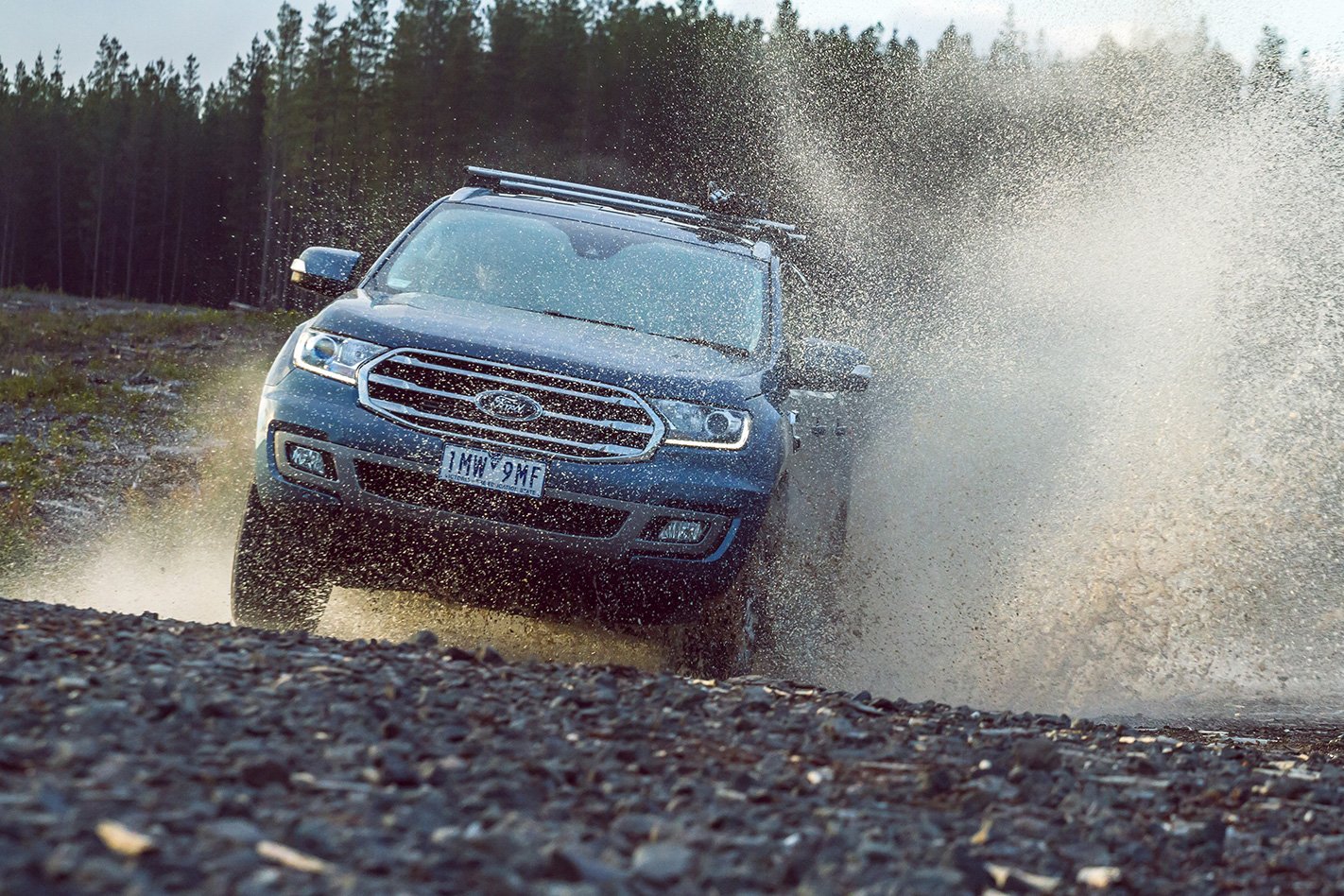
MAIN RIVALS
Jeep Grand Cherokee, Land Rover Discovery, Toyota Prado
THE WHEELS VERDICT
The Everest has matured. Mid-life facelifts are usually pretty cynical exercises in garnering a few column inches for a fading model, but in the case of the big Ford, it’s a really worthwhile shot in the arm that elevates the Everest to new heights, especially in 2.0 twin-turbo guise.
It still struggles to disguise its utilitarian underpinnings, but if you’re looking for a big SUV that can offer decent off-road ability yet doesn’t feel like a flaccid blancmange when faced with some challenging bitumen, the Everest is well worth your consideration.
PLUS: Space; rugged feel; equipment; value; new diesel engine is a step forward MINUS: Jittery ride; lack of AEB in Ambiente
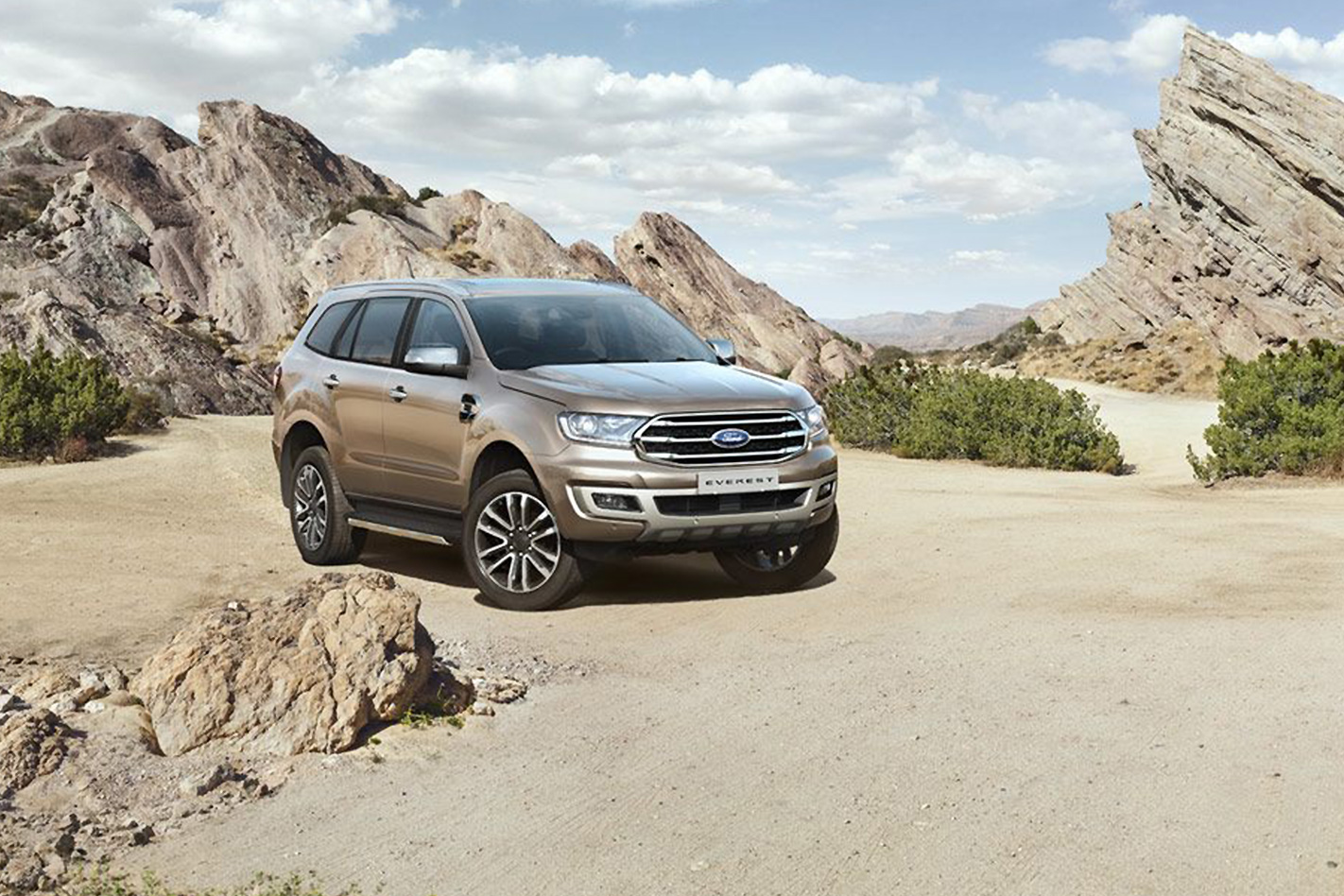
THE WHEELS REVIEW
CONTEXT is everything. Put a 157kW engine in a hefty Ranger Raptor and emblazon it with all the Ford Performance fairy dust and it can feel a little under-baked. Plumb same engine into the pointy end of a Ford Everest and suddenly you have a powerplant that’s quicker, lighter, more economical, more refined, can tow more and is more fun to pedal than the 3.2-litre five-pot that we’ve grown used to in Everests.
Yes, the engine is only 1996 cc in swept capacity, which seems faintly comical given that the Everest is about the size of a modest tectonic plate, but it has 500Nm at its elbow from just 1750rpm, which endows the big truck with reasonable get up and go. Ford doesn’t quote 0-100km/h performance numbers for its new metal, but the seat of the pants g-meter reckoned on something in the region of 11 or 12 seconds. The 2.0-litre twin-turbo unit is a little vocal on cold start up but soon settles into a more mellow timbre, providing a real contrast to the 3.2-litre, which always sounds about as sultry as one of Marge Simpson’s sisters.
An allied bonus of paying the piffling $1190 impost for the 2.0 over the 3.2-litre engine is the inclusion of Ford’s ten-speed automatic transmission, rather than the six-speed unit that continues in 3.2-litre models. Look at the numbers and the 2.0-litre seems to hold all the aces. It’s more powerful by 14kW, generates 30Nm more torque, returns 7.1L/100km as an all-wheel-drive model rather than 8.5L/100km for the five-pot, and tows 3100kg rather than 3000kg. Having said that, there were some of my colleagues who preferred the more long-legged rangy feel of the old powerplant over the more terrier-like delivery of the 2.0-litre.
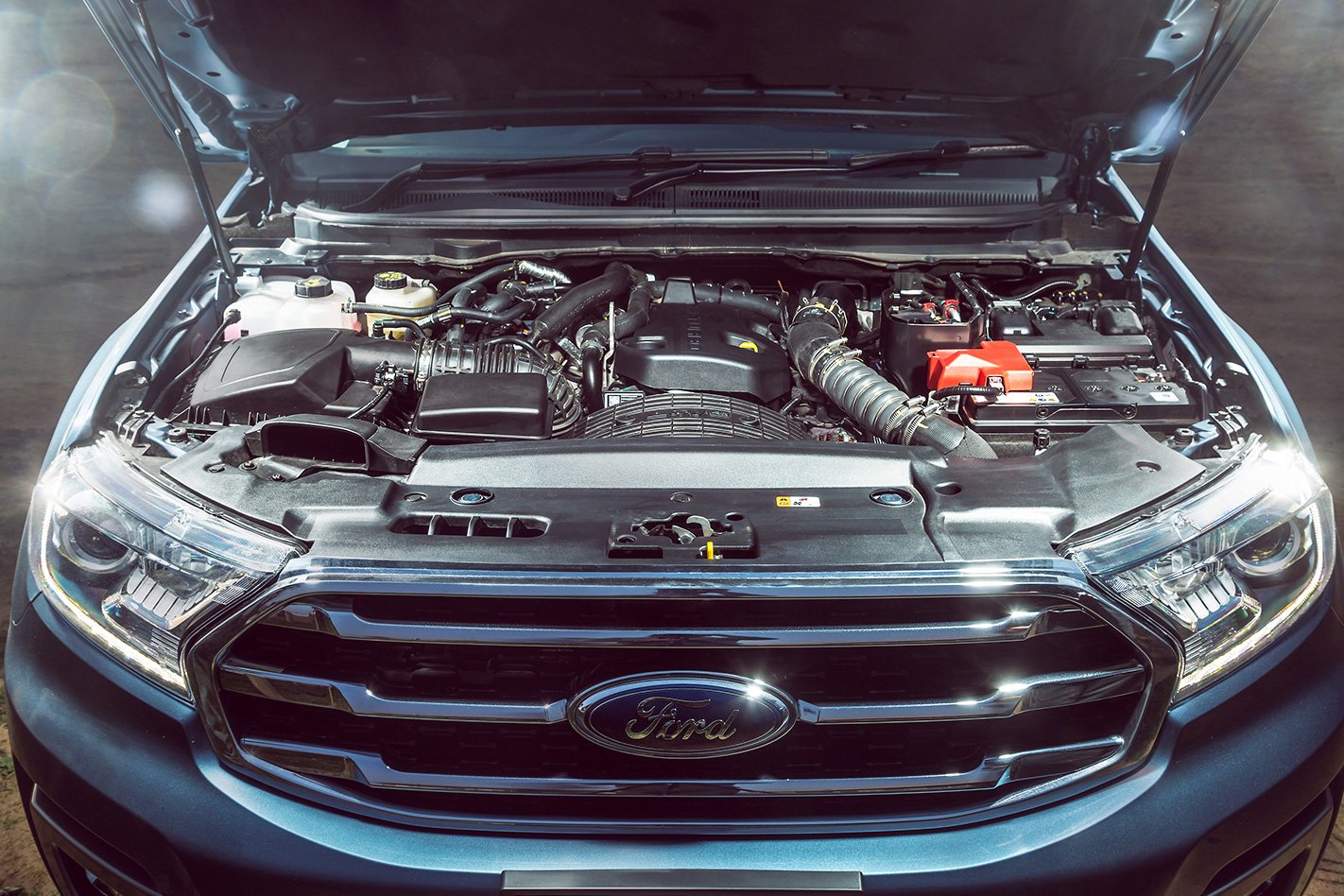
As well as fitting a new engine, the Everest also gets a mild tweak to its suspension, the mountings for the front anti-roll bar being moved aft. This has created greater roll stiffness and, as a result, Ford’s chassis engineers have been able to ease back on spring stiffness a little, which improves ride quality. And it needed to.
The old Everest was notably pattery at the front on bad bitumen and while the latest vehicle is better in that regard, it still lacks the imperious ride of something like a Toyota Prado. On the flipside of that equation, is the fact that a Prado would have sailed into the undergrowth fairly quickly after trying to follow an Everest up a set of switchbacks. The Ford boasts sharper steering and superior body control to the Toyota – and, indeed, the Land Rover Discovery – which allows us to excuse its unsettled ride somewhat.
There’s also an argument that younger kids suffer less motion sickness if they’re in a slightly firmer-suspended car, which could well be key for the sort of families that the comprises a big percentage of the Everest customer base. There remains a lot of dead travel at the top of the brake pedal action, though.
The 2.0-litre models feel notably sharper on turn-in, the engine weighing around 70kg less than the five-cylinder unit. Thanks to an acoustic windscreen, noise cancelling in-cab technology, additional soundproofing up front, and the ability of the 10-speed transmission to repeatedly plug you into the early reaches of the 1750-2500rpm torque plateau, the twin-turbo engine settles to a muted thrum at typical highway speeds. Big seats, huge mirrors, good sightlines out of the cabin and a decent active cruise control system make the Everest an exceptional kilometre demolisher.
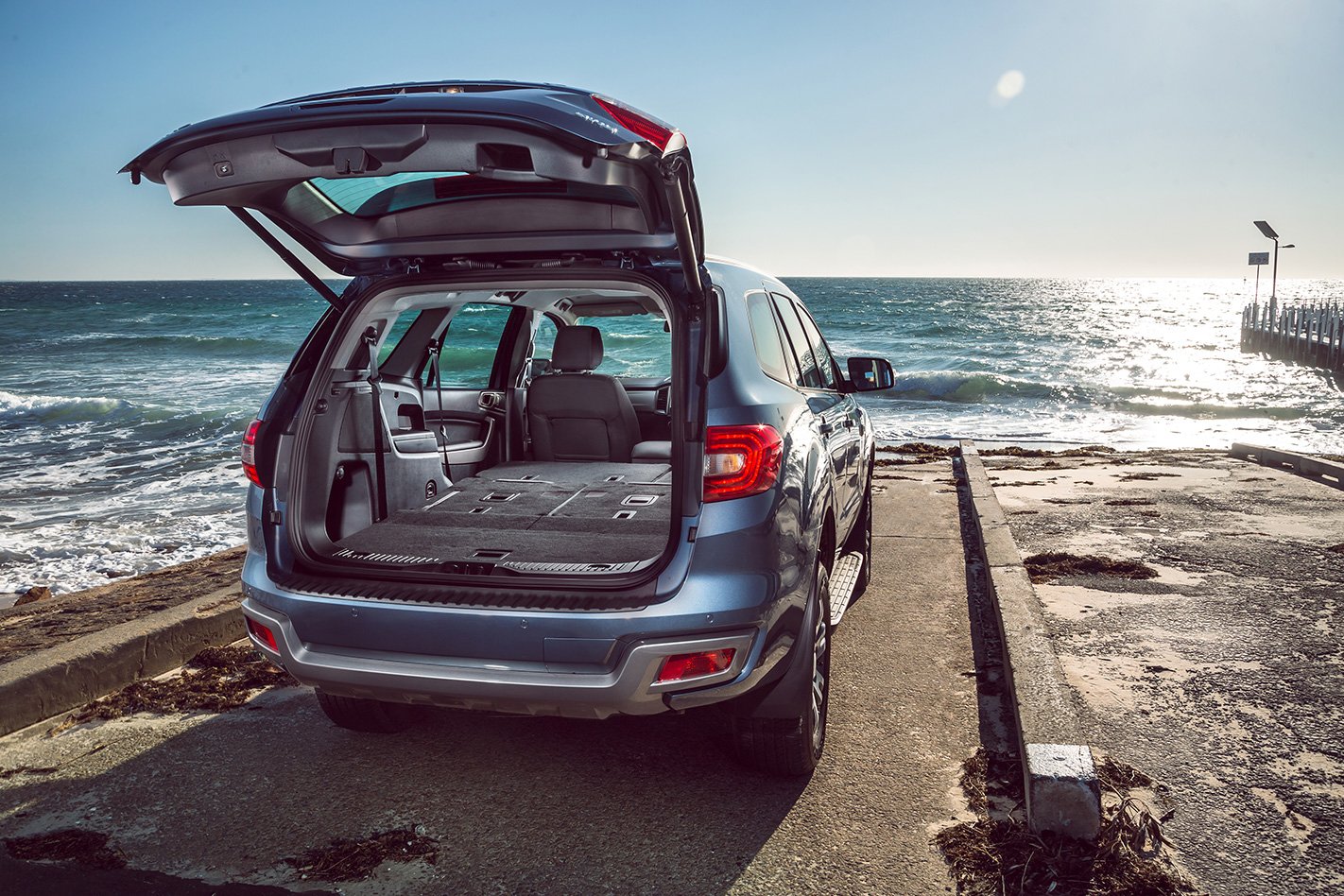
The gearshifters of the two engines are slightly different too, the six-speed box getting a traditional lever that you can shunt across into a manual mode that you then prod forward to change down. Go for the new engine and there’s no such manual mode. Instead, there’s a subtle rocker switch on the driver’s side of the lever. This looks for all the world like a manual shifting function, but is in fact Ford’s Progressive Range Select system, which allows you to limit access to some gears, for example, locking out higher gears if you’re towing, or ensuring a start in second gear in slippery conditions.
The facelift work has given the big Ford a mildly different face, with revised lights, grille and under-bumper assembly, while at the rear, the stylists have used a few tricks to try to broaden the visual effect. Look really closely and you’ll spot indentations in the door handles that signify that this model has keyless entry. The Everest was always a handsome, if slightly generic, seven-seat shape and these updates do little to change that fact. Only the 20-inch alloys fitted to the range-topping Titanium give the car a bit of visual clout.
Indoors, there’s been a concerted effort to improve the perception of quality. Touch points have been improved and the mid-range Trend model, which Ford thinks will account for better than 50 percent of all Everest sales, now gets the leather trim that was previously the preserve of the flagship Titanium. It’s faintly unforgivable that Ford has brought this new model to market without the offer of AEB on the entry-level Ambiente trim, but engineers assure us that this will arrive in a 2019 update, along with lane-keep assist and traffic sign recognition: tech that’s standard right now on Trend and Titanium trims.
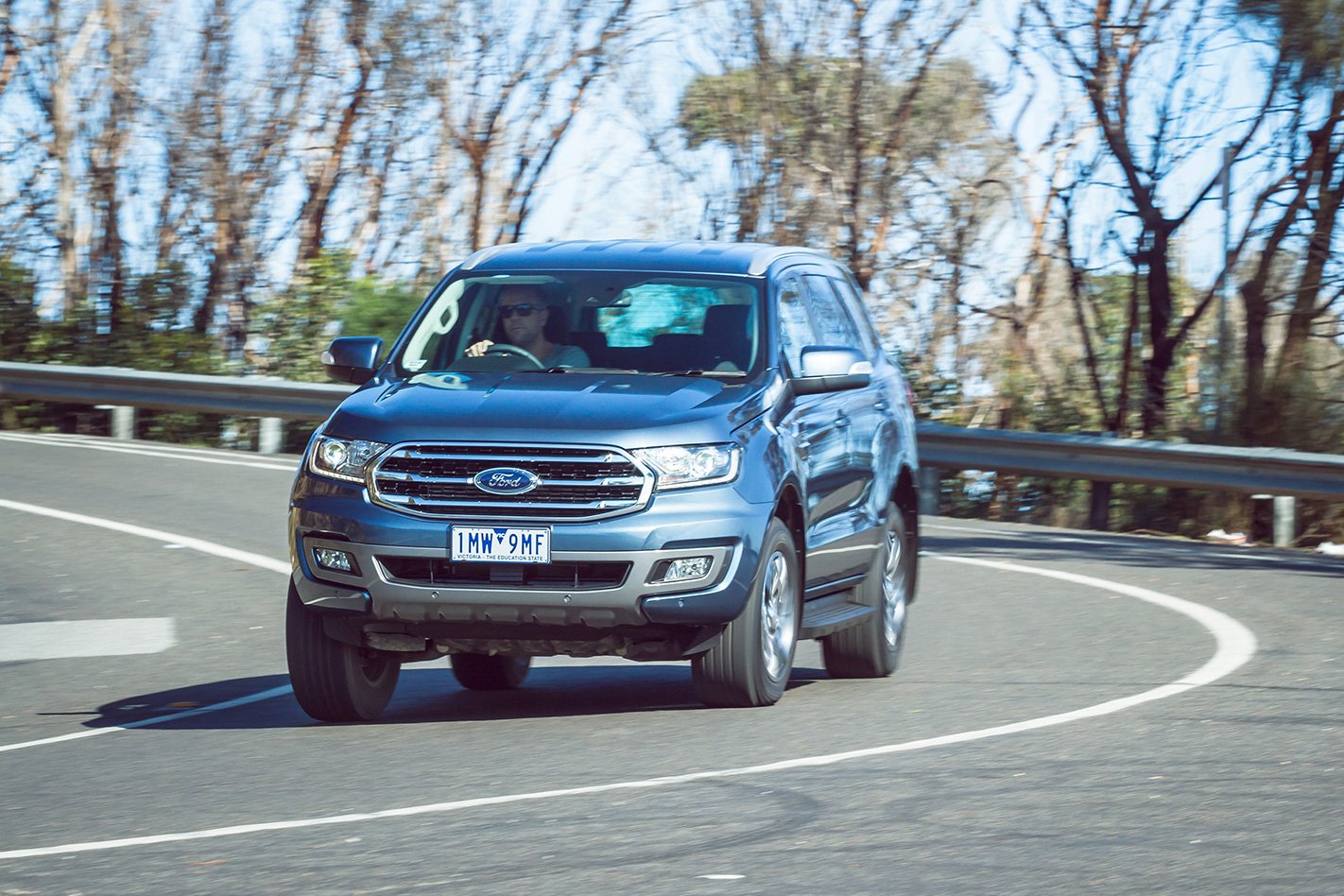
All models get push-button start and the excellent SYNC3 infotainment system with built in sat nav and mapping updates as well as Apple CarPlay and Android Auto. The voice recognition function on this is actually functional, which makes a change from most voice recognition setups, allowing you to easily control the nav and stereo without having to jab at the touchscreen. There are a few ergonomic foibles about the fascia though, chief of which is that many of the functions for 4×4 driving are set at the very base of a very dark dash.
Should you need low range or diff locks in a hurry, it’s like looking into a coal hole, especially if you’re sporting a set of sunnies. Engaging low range is a protracted faff of stopping, switching into neutral, waiting and then testing to see if everything took. The second row seat belts are also an annoyance, repeatedly clacking against their inertia reels on any sort of bumpy road which is uncomfortable for the passenger and distracting for the driver.
Otherwise the cabin is functional, if not particularly premium-feeling in design execution. The sweet spot in the range is most certainly the Trend trim, in all-wheel drive, which retails at $61,190. If you can do without all-wheel drive, you can save $5K and get one with drive going to the rear.
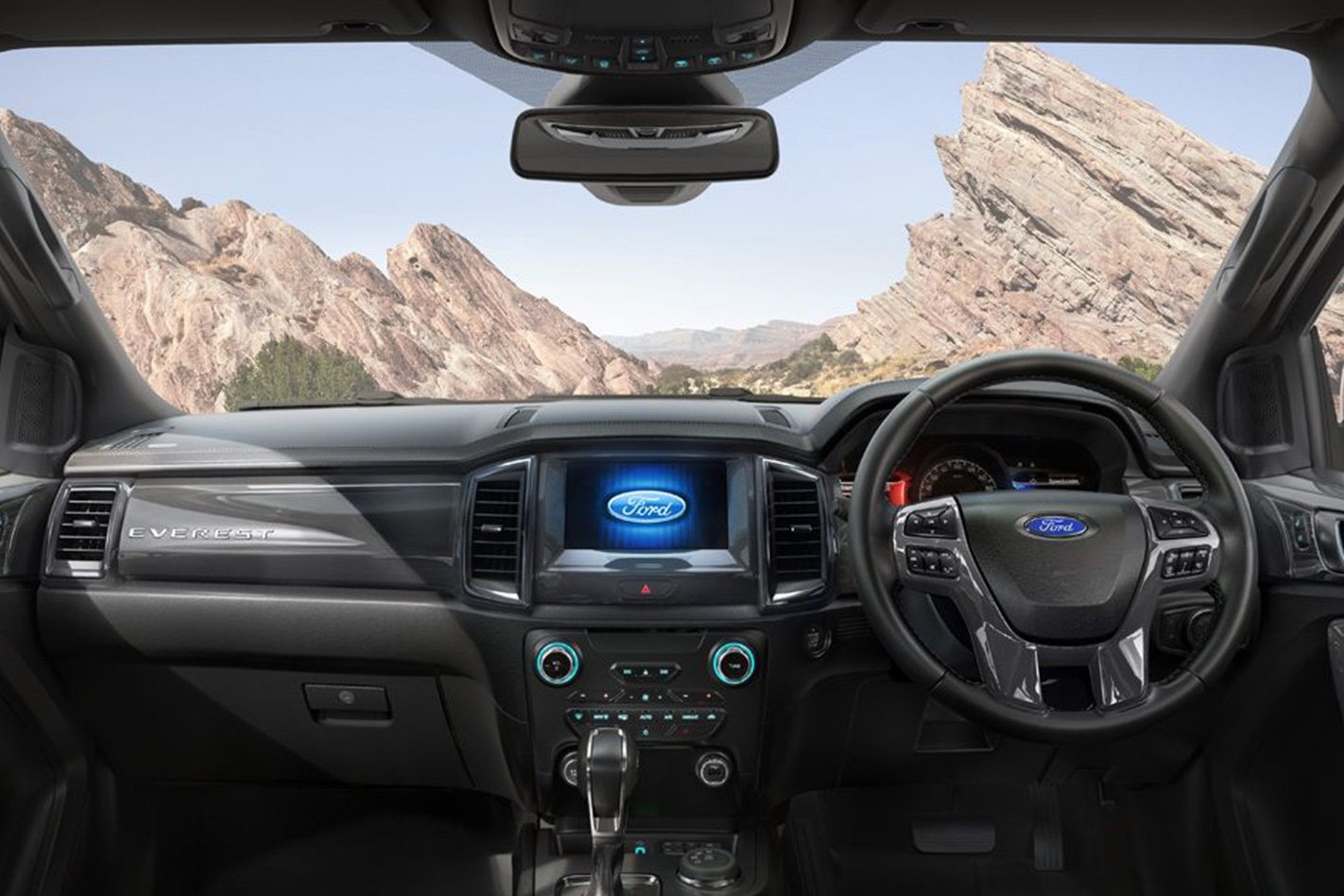
The Everest is so well equipped that there really aren’t too many options that are must-haves, with a Ford tow bar being a must-have at $1000. New to the Trend model is gear like HID headlamps, auto headlamp levelling, LED day-time running lights and a kick-activated power tailgate. From there, it’s a big step up to the Titanium trim level at $73,990, nudging as it does into Luxury Car Tax territory.
The Titanium gets a tow bar as standard along with those 20-inch alloys, a dual pane sunroof, a powerfold third row bench, tyre pressure monitoring and an 8-way electric passenger seat. Should you want to use the Titanium to indulge in a bit of light off-roading, Ford can swap out the 20in wheels for 18in alloys with more suitable rubber for no extra cost.
The Everest range is a little confusing, given that you have four mix and match parameters. Trim (Ambiente, Trend and Titanium), engine (3.2L, 2.0Bi-Turbo), drive (rear-wheel drive, all wheel, drive) and seating (five seats or seven). Basically, as you ascend the range, you get more of the desirable stuff, the Trend trim level being the switchover point where it’s possible to get both engines, both seating configurations and seating/driveline layouts. The opening price for an Ambiente with five seats, rear-drive and the 3.2-litre powerplant is $41,190, while you’ll need to stump another $5K for that car with all-wheel drive.
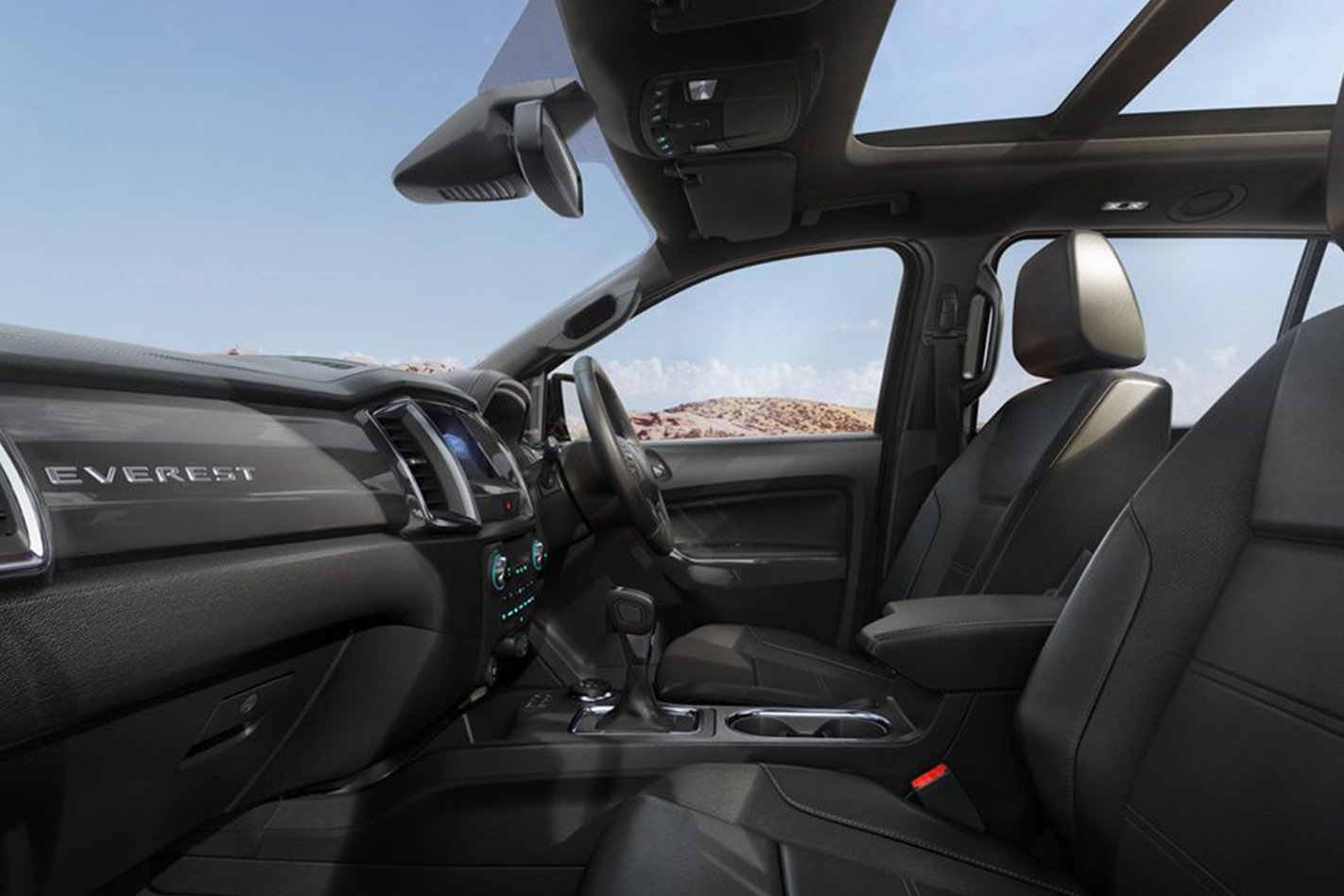
Ford has clearly listened to customer feedback with this Everest and it’s a genuinely well considered round of updates. If you’re a buyer who wants a spacious and versatile SUV that spends most of its life on road but which can turn it’s hand to some fairly serious off-road duties (it has a proper low range box and some useful off-road driving modes), the Everest has few rivals.
Unfortunately, the few it does have happen to be very good. Bring price into it and the Everest makes a strong case. For little more than $62K, you get a markedly less powerful Prado and no Discovery at all, and neither of these cars can match the Ford’s five-year unlimited kilometre warranty.
Jeep also offers a five-year deal and its Grand Cherokee Laredo CRD is cheaper and more powerful than the Everest, but the Ford’s seven-seat capacity will lift it beyond the Jeep’s reach for many. Covering off this trio hasn’t been easy, but Ford appears to have delivered some convincing arguments that ought to continue the trend line of the Everest’s rising sales figures. That’s quite some achievement.
2019 FORD EVEREST SPECS
Model: Ford Everest Trend 2.0 Bi-Turbo 4×4 Engine: 1996cc inline 4cyl, 16v, dohc, twin-turbo diesel Max Power: 157kW @ 3750rpm Max Torque: 500Nm @ 1750 to 2500rpm Transmission: 10-speed automatic Weight: 2413kg 0-100km/h: 11.5 sec (est) Fuel economy: 7.1L/100km (combined) Price: $61,100 On sale: Now
MORE: Ford Everest Range Review MORE: Ford Everest Specs, Range & Price


